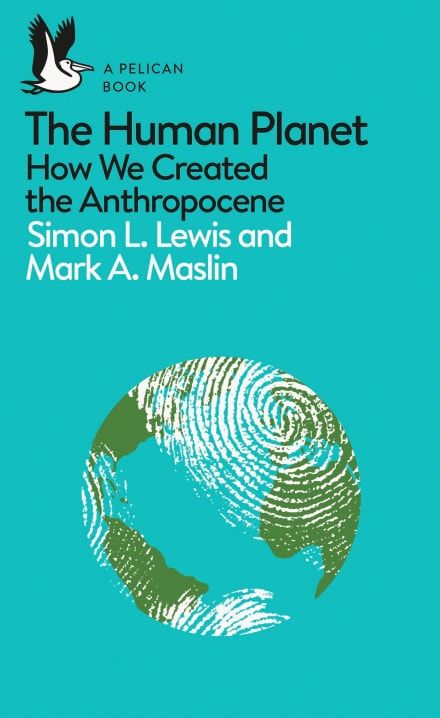The Human Planet: How We Created the Anthropocene
This excellent book sets out how human history has entered a new period: the Anthropocene, in which humans are a key factor shaping the planet. This is not just a new period in human history, but a new period in the Earth’s history.

Published by Penguin, 2018
Our species is changing our planet in such a major way that what we are doing deserves to be placed on the big-picture geological timescale. Much of this analysis will be familiar to readers of this website, but there are some features of ‘The Human Planet’ which make it stand out from the ever-growing literature on the Anthropocene and the debates it has sparked.
The overall story is illustrated with many historical and ecological details which are not only interesting in their own right but also bring the story to life in a vivid way. So even if you feel you have read enough about the Anthropocene already, this book will almost certainly have something new for you.
‘The Human Planet’ makes its own contribution to the arguments about when the Anthropocene began. The authors argue for 1610 – not the date of the “discovery” of America but the date marking a time of major impacts of Europe on America. The collision between the ‘Old’ (European) World and the ‘New’ (American) World was in many important respects the same sort of meeting between continents as have in the past only been brought about by the Earth’s plate tectonics. This time, instead of the continents moving, people moved, and plants, animals, and diseases moved as a result. The world was transformed.
The choice of start-dates is significant because it links in with the political aspect of the book, which shows very clearly the close connection between capitalism and the Anthropocene. Much earlier than 1610 for the start and the Anthropocene just looks like something humans inevitably do; much later, as in the proposals for 1945 or 1950, and it deals in the superficialities of the growth of consumer society without getting at the causes in economic dynamics.
There is one key part of the story, however, that even these two radical authors have not dared to touch: the character of the organised geology community internationally, who are the people who govern whether ‘the Anthropocene’ is officially adopted as a scientific category. Much of the opposition to the concept of ‘the Anthropocene’ has come from geologists, who of course are entitled to an important say because ‘Anthropocene’ started as a geological concept, before it spread to evolutionary biology and then into politics and philosophy.
It is important to bear in mind here that much of geology is funded by the oil industry and many geologists have jobs in the oil industry, and this will almost inevitably affect geologists’ thinking. Amongst the leading symptoms of the Anthropocene is climate change and the burning of fossil fuels, and so an emphasis on the close connection between the Anthropocene and capitalism may not be so welcome in parts of the geology community, and up to now the leaders of that community have refused to recognise the Anthropocene as part of the official geological timescale.
Despite this, the concept of the Anthropocene is a great advertisement for geology in the sense that it demonstrates the importance of a geological perspective on current events - even if many geologists themselves prefer to steer clear of its political implications.



